Our Blog - Romans-sur-Isère, France
In 838, the town of Romans was born from the foundation of an abbey near a fjord on the River Isère. You will see lots of town names with the form "something" sur "something". "Sur" in French means "on" and normally the 2nd "something" is the name of a river. So here, it is the town of Romans that is on the River Isère. In some cases, you will see multiple cities with the same first name but that are "on" different rivers or have some other distinguishing characteristic at the end. For example, there are several towns that start with Roquefort (like the cheese) ... Roquefort-les-Cascades, Roquefort-sur-Garonne, Roquefort-les-Pins, Roquefort-sur-Soulzon, and Roquefort-des-Corbières. If you are looking for the cheese, you need to go to Roquefort-sur-Soulzon.
So anyway, back to Romans-sur-Isère ... For awhile, it was a major player in the shoe industry, at one point in time there were almost 20,000 people employed in creating shoes. However, that ended starting in the 1970's and now there is almost nothing left of the shoe industry in Romans.
The Jacquemart Tower was built in the 12th century on top of an ancient gate in the original walls of the town and a clock was installed in 1429. The bell at the top is rung by an automated bell-ringer who strikes out the hour with a hammer. The automaton has been striking the hours since 1429. The bell-ringer is a carved wooden and zinc guy that is dressed in the jacket of a peasants, hence the nickname "Jacquemart". The picture of the bell-ringer isn't that good, sorry.
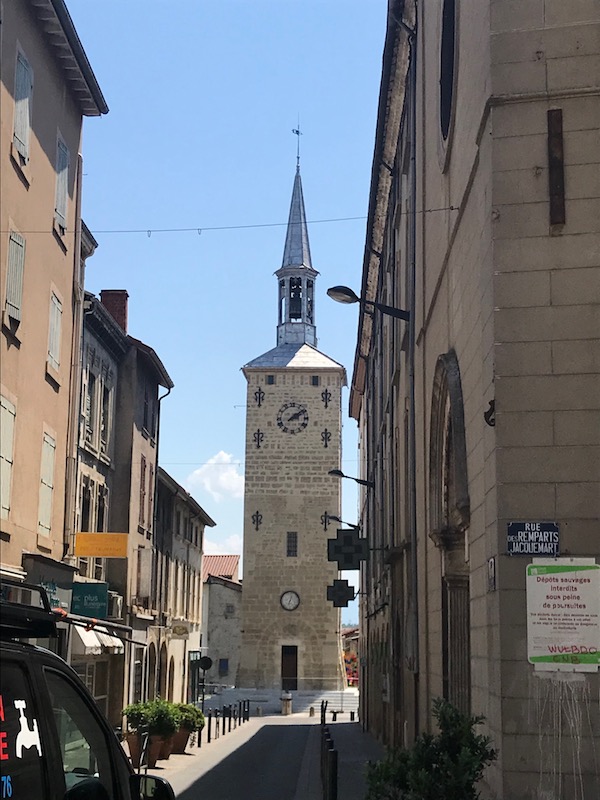
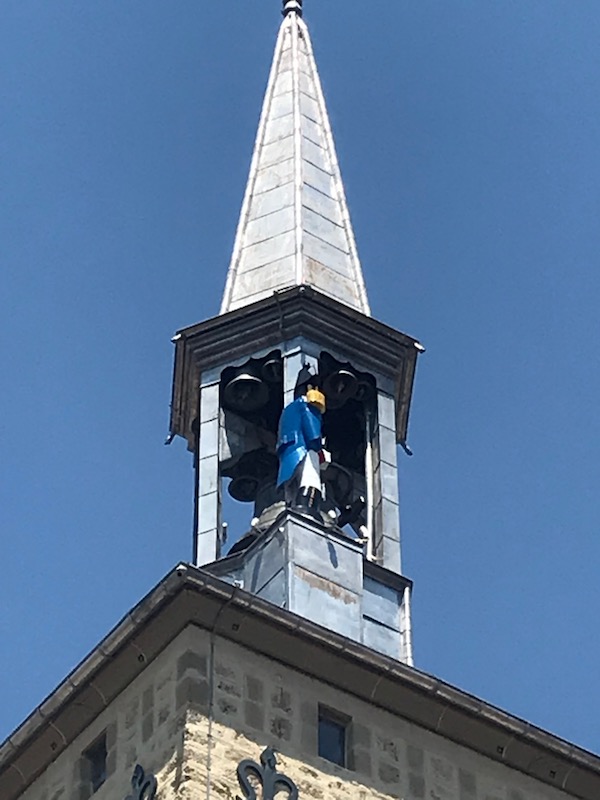

There is a very medieval section and here are a couple of the more interesting houses.


Collégiale Saint Barnard owes its name to St Barnard, founder of Romans in 837 AD. Its style is characterized by a blend of the Romanesque and the Gothic. You can see the Romanesque arches on the first couple levels, but then look at the high Gothic ribbed vaults.
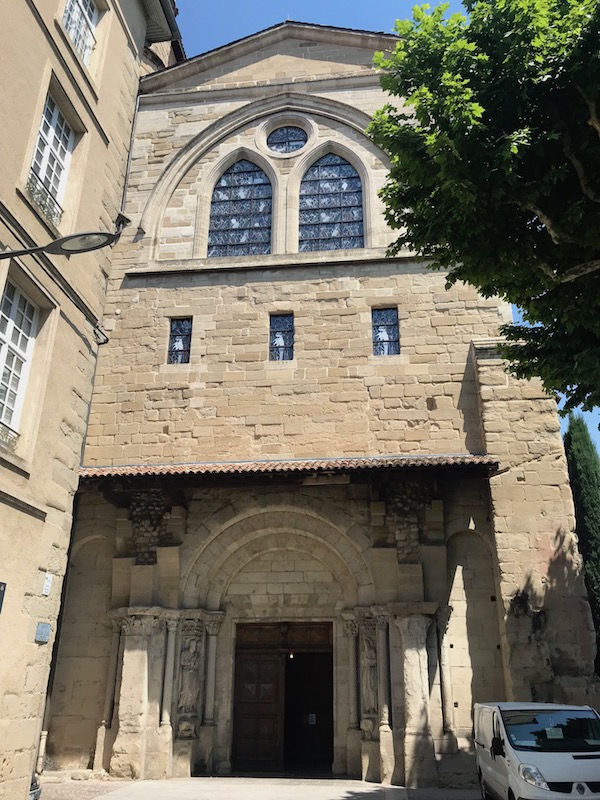
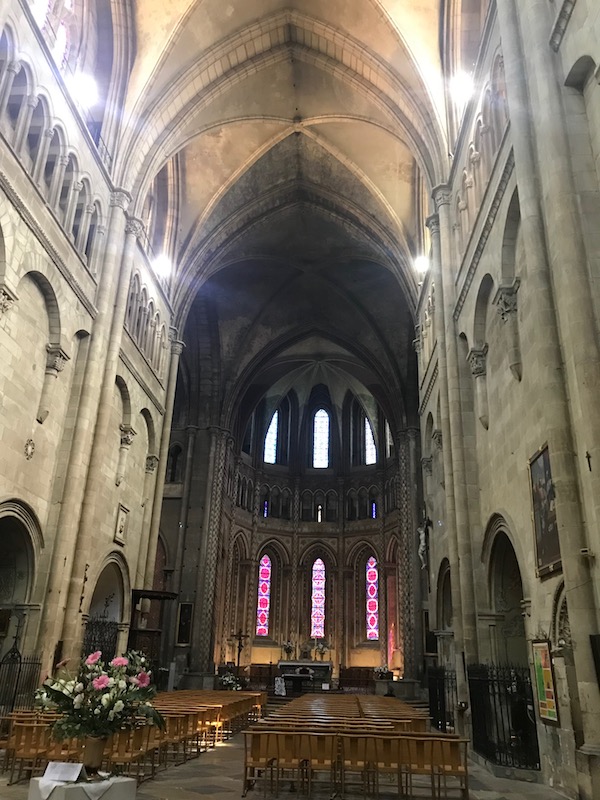
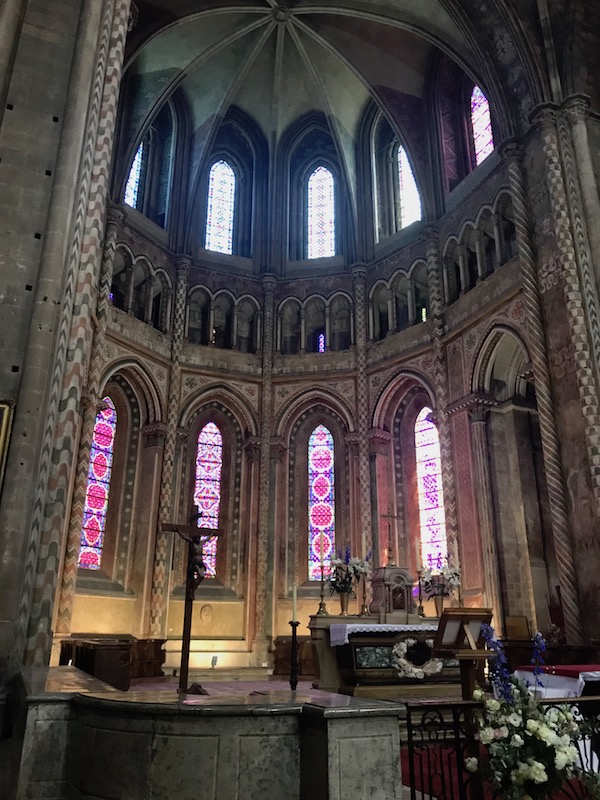
A couple more "normal" stained glass windows. In the first one, you can see the highly-decorated walls around the window itself.

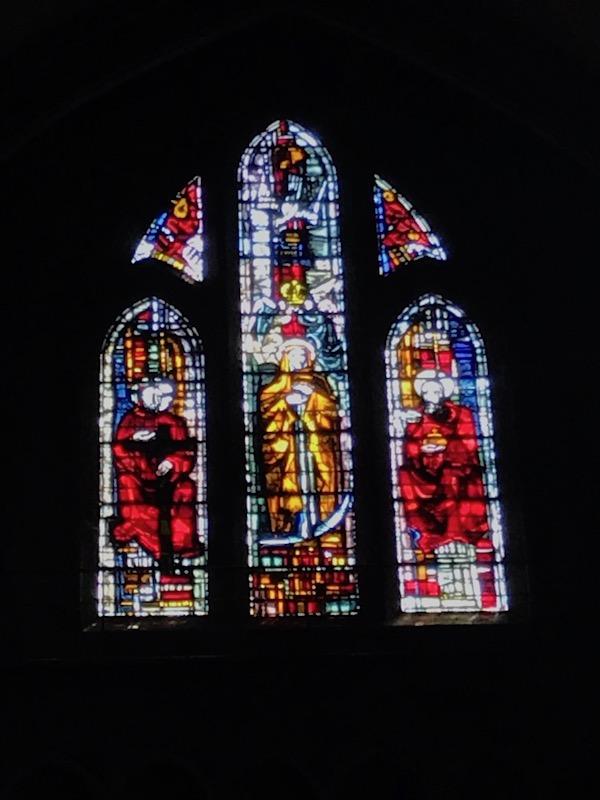
This last one is a new window, made in 2000 by a German artist. They depict the apocalypse as described by the Apostle John. At the top, is a circle that is an evocation of Heaven. Below that are two bays in a pointed arch presents the New Jerusalem. Below that (which I didn't capture), are three small rectangular windows that illustrate Hell.
